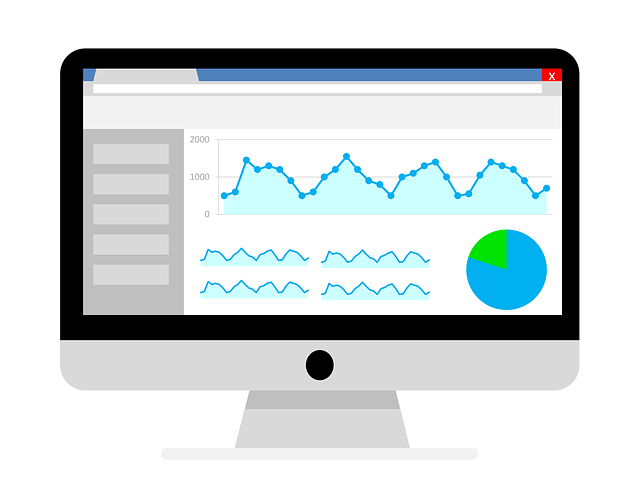Table of Contents
Understanding the Importance of Tracking SEO Results
Measuring the success of your SEO efforts is crucial for the growth and success of your online presence. Tracking SEO results allows you to understand the impact of your strategies and identify areas for improvement. It provides valuable insights into the effectiveness of your keywords, content, and website optimization.
When it comes to tracking SEO results, keywords play a significant role. By monitoring how your targeted keywords perform in search engine rankings, you can gauge the visibility of your website and the effectiveness of your SEO efforts. This data enables you to identify high-performing keywords and optimize your content accordingly, ensuring that you are attracting the right audience and driving organic traffic to your website. Additionally, tracking the performance of your keywords allows you to stay ahead of your competitors and adjust your SEO strategy as needed.
Setting Clear Goals for Your SEO Campaign
Setting clear goals is an essential first step in any SEO campaign. Without specific objectives in mind, it is difficult to measure the success of your efforts. When setting goals for your campaign, it is important to consider keywords, website traffic, and conversion rates.
One important goal to set is improving keyword rankings. Identify the keywords that are most relevant to your business and target audience, and aim to increase your ranking for those keywords in search engine results. Another goal to consider is increasing website traffic. This can be measured by the number of visitors to your site, as well as the quality of that traffic. Lastly, setting goals related to conversion rates is crucial. Determine what actions you want users to take on your site, such as making a purchase or filling out a contact form, and track the percentage of visitors who complete those actions. By setting clear goals for your SEO campaign, you can better track and measure your progress, and make adjustments as needed.
Selecting the Right SEO Metrics to Measure Success
When it comes to selecting the right SEO metrics to measure success, it is essential to focus on the key performance indicators (KPIs) that align with your goals. One important metric to consider is organic traffic, which refers to the number of visitors that come to your website through search engine results. By monitoring your organic traffic, you can determine the effectiveness of your SEO efforts in driving targeted visitors.
Another crucial metric is keyword rankings. Tracking the position of your targeted keywords in search engine results allows you to evaluate your website’s visibility and relevance for specific search terms. It is important to regularly monitor your keyword rankings to identify any fluctuations and make necessary adjustments to your SEO strategy. Additionally, analyzing your click-through rate (CTR) can provide insights into the effectiveness of your meta tags and titles, as well as the overall appeal of your website’s listing in search results. By measuring these metrics, you can gain a comprehensive understanding of your SEO performance and make data-driven decisions to optimize your website for better visibility and higher organic traffic.
Utilizing Google Analytics for SEO Tracking
Google Analytics is a powerful tool that can provide valuable insights for tracking SEO performance. By integrating your website with Google Analytics, you can access a wealth of data that can help you understand how your site is performing in terms of organic search traffic. One key metric to track is organic traffic, which shows the number of visitors who find your site through search engine results. By monitoring this metric, you can determine if your SEO efforts are driving more traffic to your website and evaluate the impact of any changes you make to your SEO strategy.
Another important metric to analyze in Google Analytics is the bounce rate. This metric measures the percentage of visitors who navigate away from your website after viewing only one page. A high bounce rate could indicate that your website is not meeting the expectations of visitors, and it may be a sign that you need to optimize your site’s content, design, or user experience. By identifying areas with high bounce rates, you can make data-driven decisions to improve user engagement and increase the chances of converting visitors into customers.
Implementing SEO Tools for Tracking Keyword Rankings
As part of your SEO campaign, it is crucial to implement SEO tools that can effectively track keyword rankings. By tracking the performance of your keywords, you can assess their effectiveness in driving organic traffic to your website. One popular tool for this purpose is Google Search Console. This free tool provides valuable insights into how your website is performing in search engine results pages (SERPs) and allows you to monitor keyword rankings over time. Additionally, there are several paid tools available such as Ahrefs, SEMrush, and Moz that offer more advanced features and comprehensive data to help you track keyword rankings more efficiently.
When implementing SEO tools for tracking keyword rankings, it is important to consider the relevance and competitiveness of your keywords. Focus on selecting tools that provide accurate and up-to-date data on keyword rankings. These tools should also allow you to compare your rankings with those of your competitors, enabling you to identify areas for improvement. By regularly monitoring the performance of your keywords, you can make informed decisions about your SEO strategy and make necessary adjustments to optimize your website’s visibility in search engine results.
Monitoring Website Traffic and User Behavior
To effectively track the success of your SEO campaign, it is crucial to monitor website traffic and user behavior. By analyzing these metrics, you can gain valuable insights into how visitors are interacting with your site and identify areas for improvement.
One key metric to monitor is the number of website visitors. This statistic provides valuable information on the overall reach and popularity of your website. By tracking the number of unique visitors, you can gauge the effectiveness of your marketing efforts and identify any fluctuations in traffic.
Another important metric to consider is the bounce rate. This metric measures the percentage of visitors who leave your site after viewing only one page. A high bounce rate may indicate that your website is not engaging or relevant enough, prompting visitors to leave without exploring further. By monitoring the bounce rate, you can identify potential issues and make necessary adjustments to improve user experience and retain visitors on your site.
In addition, it is worthwhile to monitor the average time spent on your website. This metric provides insights into how engaging your content is and how well it captures visitors’ attention. A longer average time spent on your site suggests that visitors are finding value in your content and are more likely to explore other pages. On the other hand, a short average time spent on your site may indicate that visitors are not finding what they are looking for or are not sufficiently engaged. By analyzing this metric, you can identify areas for improvement and make adjustments to enhance user experience.
Overall, monitoring website traffic and user behavior allows you to gain a comprehensive understanding of how visitors interact with your site. By analyzing these metrics, you can make informed decisions to optimize your website, improve user experience, and ultimately drive more conversions.
Analyzing Backlinks and Referral Traffic
Analyzing backlinks and referral traffic is an essential aspect of tracking your SEO results. Backlinks, or inbound links from other websites, play a crucial role in determining the authority and relevance of your website in search engine rankings. When analyzing backlinks, it is important to consider factors such as the quality, quantity, and diversity of the links pointing to your site. High-quality backlinks from reputable and relevant sources can significantly boost your search engine visibility and organic traffic.
Referral traffic, on the other hand, refers to the visitors who land on your website through a link on another site. By analyzing referral traffic, you can gain insights into which external sources are driving the most visitors to your website. This information not only helps you understand the effectiveness of your backlink strategies but also enables you to identify potential partnerships and collaborations with influential websites in your industry. Monitoring referral traffic also allows you to track the performance of your content marketing efforts and determine which types of content are attracting the most engaged and qualified visitors.
Tracking Conversion Rates and Goal Completions
When it comes to tracking the success of your SEO campaign, one important aspect to consider is the conversion rates and goal completions. Conversion rates measure the percentage of visitors who take a desired action on your website, such as making a purchase, filling out a form, or subscribing to your newsletter. By tracking these rates, you can gain valuable insights into the effectiveness of your SEO efforts and make data-driven decisions to improve your website’s performance.
To track conversion rates and goal completions, it is essential to have clear goals in mind. These goals can vary depending on your specific business objectives, such as increasing sales, generating leads, or improving user engagement. Once you have established your goals, you can use tools like Google Analytics to set up conversion tracking and monitor the progress of your campaigns. By regularly analyzing the conversion rates and goal completions, you can identify any areas of improvement and optimize your SEO strategies accordingly. Remember, tracking these metrics is crucial for understanding the impact of your SEO efforts on your bottom line and driving meaningful results for your business.
Measuring Brand Visibility and Online Reputation
Brand visibility and online reputation play a crucial role in the success of any business. To measure your brand visibility, it is important to track various metrics that indicate how often your brand is being seen by online users. One such metric is the number of impressions your brand receives through search engine results, social media platforms, and online advertisements. By analyzing these impressions, you can gain valuable insights into the reach and exposure of your brand in the digital space.
In addition to brand visibility, online reputation is equally important for businesses. Monitoring online reviews, customer feedback, and social media mentions can help you assess the overall perception of your brand among customers. It is essential to keep track of positive and negative sentiment surrounding your brand and respond to customer grievances promptly. By measuring your online reputation, you can identify areas of improvement and take necessary steps to enhance your brand’s reputation in the online landscape.
• Tracking the number of impressions your brand receives through search engine results, social media platforms, and online advertisements
• Analyzing these impressions to gain insights into the reach and exposure of your brand in the digital space
• Monitoring online reviews, customer feedback, and social media mentions to assess the overall perception of your brand among customers
• Keeping track of positive and negative sentiment surrounding your brand
• Responding promptly to customer grievances
• Identifying areas of improvement based on measuring your online reputation
• Taking necessary steps to enhance your brand’s reputation in the online landscape
Utilizing Social Media Metrics for SEO Tracking
When it comes to tracking SEO results, social media metrics are a crucial component that should not be overlooked. With the ever-increasing influence of social media in our daily lives, it has become imperative for businesses to incorporate social media in their SEO tracking strategies. By analyzing the performance of your social media platforms, you can gather valuable insights into the effectiveness of your SEO efforts.
One important social media metric to consider is engagement. This includes likes, comments, shares, and other forms of interaction with your social media posts. By monitoring the level of engagement your content receives, you can gauge the level of interest and relevancy it holds for your target audience. Additionally, tracking the number of followers and subscribers can provide an indication of your brand’s reach and popularity on social media platforms. By utilizing social media metrics for SEO tracking, businesses can gain a better understanding of their online presence and make informed decisions to optimize their SEO strategies.
Assessing Mobile Optimization and User Experience
When it comes to optimizing your website for mobile devices, it is crucial to assess how well your site performs on different mobile platforms and devices. Mobile optimization involves ensuring that your website is responsive and user-friendly on smartphones and tablets. This includes optimizing page load speed, improving navigation for smaller screens, and designing mobile-friendly layouts. By assessing the mobile optimization of your website, you can identify any areas that need improvement and make the necessary adjustments to provide a seamless user experience.
User experience (UX) plays a significant role in determining the success of your website. A positive user experience encourages visitors to spend more time on your site, increases engagement, and improves conversion rates. When assessing the user experience, you should consider factors such as site navigation, page layout, readability of content, and ease of use. By optimizing the user experience, you can enhance customer satisfaction and drive more conversions. Regularly assessing and improving both mobile optimization and user experience can help you stay ahead of the competition and ensure that your website is meeting the needs and expectations of your target audience.
Conducting Competitor Analysis for Benchmarking
Conducting a competitor analysis is essential for benchmarking your SEO efforts against your competitors. By analyzing their strategies, strengths, and weaknesses, you can gain valuable insights that can inform and improve your own SEO strategy. One key aspect to consider during competitor analysis is keyword research. Identifying the keywords your competitors are targeting can help you understand their content focus and their target audience. This information can be used to refine your own keyword strategy and optimize your content to reach a wider audience.
Another important factor to consider when conducting competitor analysis is backlink analysis. Backlinks play a major role in search engine rankings, and by analyzing your competitors’ backlink profiles, you can gain insights into their link-building strategies. This information can help you identify potential link-building opportunities for your own website and improve your overall SEO performance. Additionally, analyzing your competitors’ backlink profiles can help you identify any toxic or low-quality backlinks that may be negatively impacting their rankings, allowing you to avoid these pitfalls in your own link-building efforts.
Reviewing and Adjusting Your SEO Strategy Based on Results
After diligently tracking the results of your SEO efforts, it is crucial to review and adjust your strategy accordingly. By analyzing the gathered data, you can identify areas of improvement and make necessary changes to achieve better results. This process involves closely examining various metrics such as website traffic, keyword rankings, conversion rates, and user behavior.
One important aspect to consider when reviewing your SEO strategy is website traffic. By analyzing the source of traffic, you can determine which channels are generating the most visitors to your website. Additionally, monitoring user behavior, such as bounce rates and time spent on pages, can provide valuable insights into the effectiveness of your website’s content and navigation. It is essential to identify any patterns or areas of weakness in order to optimize your website for better engagement and ultimately improve your search engine rankings.


